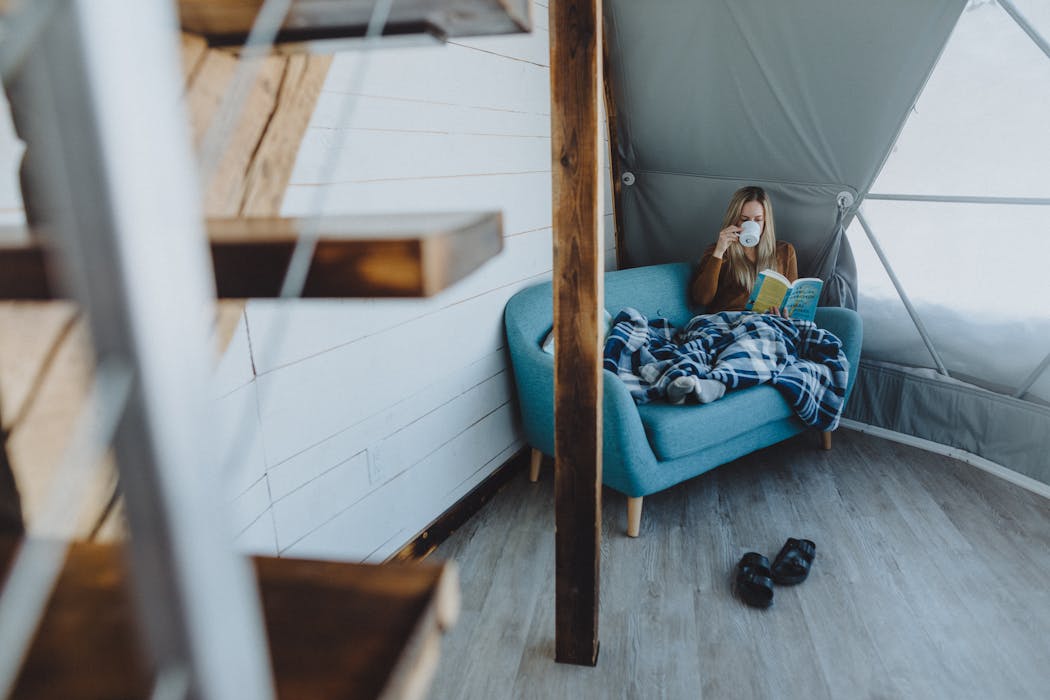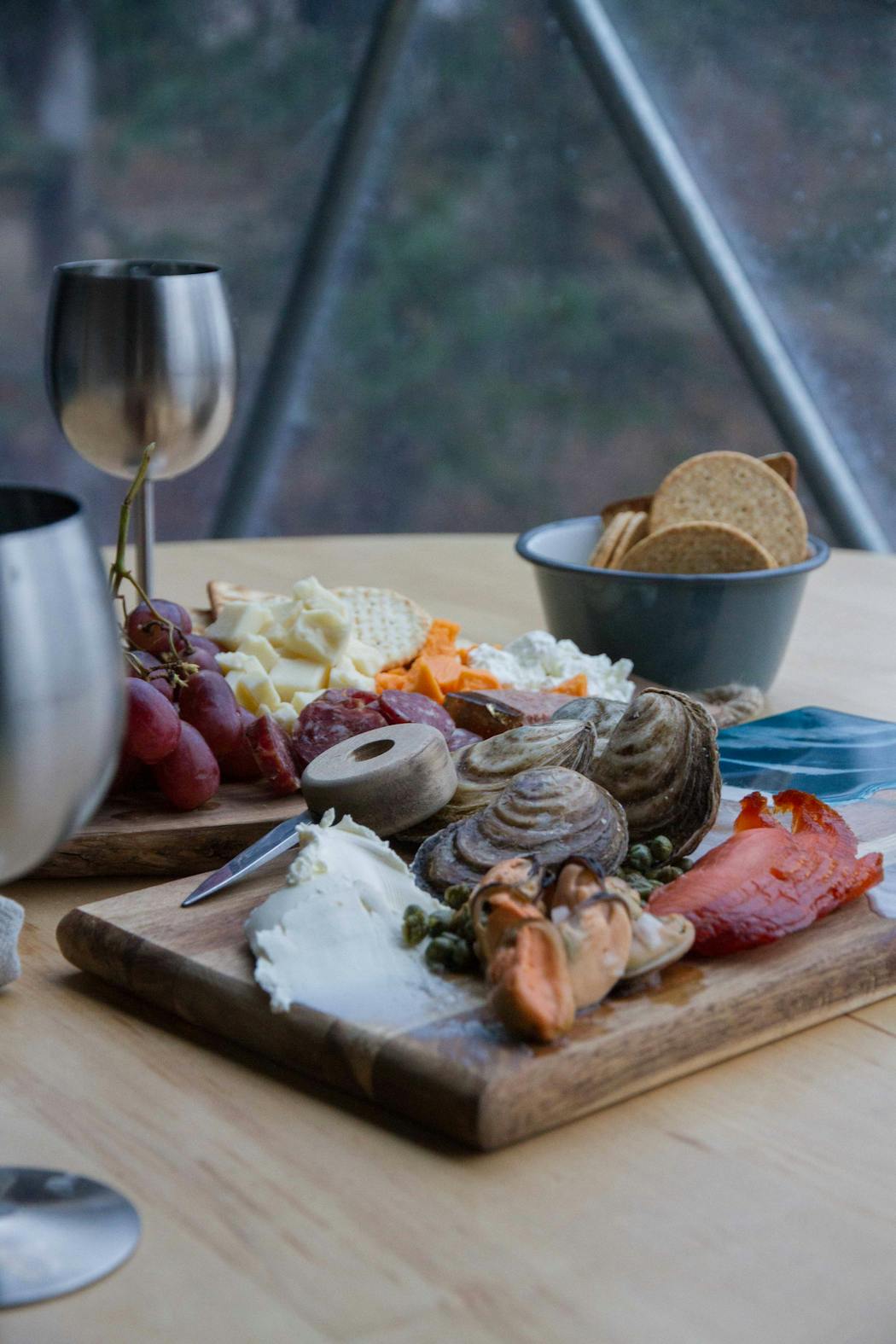As I drove along New Brunswick's Acadian Peninsula, my route was shrouded by a thick curtain of icy, billowing flakes. I barely spotted the turnoff for Chemin des Huitres (Oyster Road). After parking, I roamed about, stretching my legs, when I came upon a fantastical vision: a large white geodesic dome glowing in the twilight.
I wandered over to a contemporary rectilinear building, the Hub, where I found Patrick (Pat) Gauvin, one of the owners of Cielo Glamping Maritime. Pat escorted me to my accommodation, showing off the resort's numerous sustainable and locally sourced features and amenities. But I was fixated on one thing — that I would be staying in an accommodation that resembled my obsession: snow globes, which I have collected since I was a kid.
New Brunswick, the largest of Canada's three Maritime Provinces (along with Nova Scotia and Prince Edward Island), is also one of its least visited regions. When U.S. tourists do travel to this province with its extensive coastline, it's typically for the sun-kissed sands and warm waters that beckon beachgoers in the summer, or to gape at breaching whales and awe-inspiring scenery at the Bay of Fundy, renowned for its mega tides.
Instead, I ventured to Acadia — where much of the population traces its roots to 17th-century French settlers — in winter, for a stay at Cielo in the bayfront town of Haut-Shippagan, considered New Brunswick's commercial fishing hub.
Once ensconced in my comfy dome, I strolled through the rooms, including a stylish wood-paneled bathroom with a countertop fashioned from upcycled barn wood and a surreal pen-and-ink drawing on the wall. But the main room acted as a magnet to me. I snuggled under a blanket near a toasty wood-pellet stove and gazed through the panoramic window at the snowscape blanketing the frozen Bay of Saint-Simon, with a brilliant tapestry of stars and constellations above.
The next evening, as I sat at my dining table, the window framed yet another breathtaking aspect: The sun settled over the horizon, painting the sky in a profusion of pink, orange and crimson shades. In my fantasies, maybe this was what it was like being inside a snow globe of sorts, looking out.
Pat and co-owner Emilie LeBlanc are local residents who may not share my snow-globe obsession, but they are passionate about New Brunswick and its myriad treasures. They came to this glamping project with eclectic backgrounds: He was a documentary filmmaker and she's a nutritionist. Together they're committed to boosting awareness of what's wonderful about this province, highlighting sustainability and local sourcing of just about everything their guests experience.
Eco-friendly design
With its spectacular views of sky and water, it's no wonder that Pat and Emilie chose the word "cielo" to name their resort. "Ciel" means sky in French and the "o" sounds like "eau," the French word for water. They refer to their five domes not as snow globes but "pearls," referencing the precious jewels created by oysters. The one-bedroom Saint-Simon Pearl is named for the small, buttery oysters harvested from this bay by family-owned Mallet Oysters and served at Cielo. And my two-bedroom dome, Moon Snail Pearl (La Perle de Lunatie), is named for a local snail.
In keeping with Cielo's goal to upcycle and repurpose, many wooden features and accents in the domes, such as the columns, kitchen shelves, bathroom vanity, bedside tables and stairs leading to a second bedroom, were sourced from an old dairy barn from Emilie's family farm.
Other amenities show off New Brunswick's bounty, including handmade soap produced from local clay and honey, and soft, colorful locally made blankets. Aside from the private hot tub on the deck, items designed to make the guest's stay relaxing are ubiquitous, whether it's an essential-oil diffuser beside the bed, or a handmade oyster shucking pad in the kitchen. Everything references the location — even a coffee cup emblazoned with a maritime map drawn by Pat.
Sustainable cuisine
New Brunswick enthusiastically embraces the slow food movement. No surprise, considering its access to abundant fresh fish and seafood as well as farms supplying meats, produce and herbs. In the sun-filled, wood-paneled Hub — Cielo's prime gathering spot for food, drink and occasional entertainment — this ethic is front and center. Guests gravitate to the bar area and community tables, savoring the pleasant aroma of fresh coffee beans from local roaster Brulerie Munro.
A popular way to discover the area's culinary cornucopia is to choose a personalized charcuterie or "seacuterie" platter. Daily offerings may include bay-harvested oysters, pickled herring, hot or cold smoked salmon, myriad cheeses such as cumin-spiced goat's milk cheese, and dried pork or duck sausage. Once the staff prepares it, you can indulge at the Hub or in the privacy of your dome.
Those who settle in at the bar can enjoy a beer or other drink along with a platter of fresh oysters paired with a local hot sauce and a house-made mignonette. The Hub has half a dozen beers on tap from several New Brunswick craft breweries, including CAVOK Brewing Co. The brewer's La Perle St.-Simon gose was exclusive to Cielo, with pleasant tartness and refreshing salinity.
Foodies will also delight in the Hub's scheduled culinary programs where a seasonal, ever-changing four-course dinner menu is served, centered on — of course — local ingredients. This might include a fish cake made with scallops, smoked arctic char accompanied by kale and yellow beets drizzled with a creamy seaweed sauce, and blueberry crumble for dessert.
Jeanine Barone is a New York City-based journalist who specializes in hidden treasure travel.




